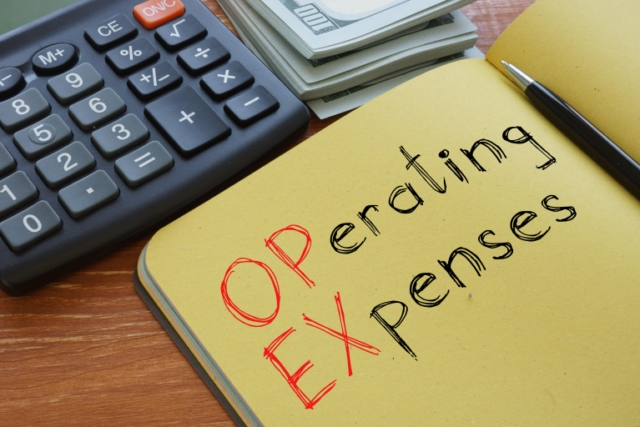In this article, we’ll explain step-by-step, with formulas and examples, how operating expenses are calculated. You’ll also learn how to put them into context to improve your business’s decision-making.
- Knowing how operating expenses are calculated is very simple with the annual accounts in hand.
- Operating expenses are one of the most important elements you should track to control your business.
Knowing how operating expenses are calculated is useful for any manager, regardless of their level of accounting knowledge. It’s not complicated and is also very helpful for understanding accounting and financial reports.
In fact, it’s connected to both the everyday and major strategic decisions. To a certain extent, we could understand them as being to a company what sap is to a tree.
That is, they are necessary to run the company, and any serious problem with operating expense flows can jeopardize the organization.
Important Note: Optimize your finances with expert tax and wealth management services. Reduce tax liability, grow assets, and secure your financial future today.
What are operating expenses?
We can define operating expenses as those incurred in the normal course of business activity . They are associated with the production process and, within the company’s overall expenses, do not include operating expenses, financial expenses, or income taxes.
How are operating expenses calculated?
At first glance, it may seem very simple. In reality, it involves two steps :
- Calculate the amount of each operating expense , grouped by category. For example, calculate the total cost of personnel, supplies, depreciation, etc.
- Add the amounts for each operating expense category to obtain the total operating expense amount.
Obviously, the second step is very simple . If you don’t make mistakes with the arithmetic operation, it’s a simple addition. However, the first step can be more or less complicated depending on the circumstances.
For example , calculating how much monthly salaries add up to operating expenses is easy. On the other hand, other expenses may require more accounting time, such as long-term employee compensation, inventory variation , or depreciation , to name a few examples. In short, calculating operating expenses is simple once all the accounting work is done.
Formula for calculating operating expenses
If we follow the normal profit and loss account model , we can calculate operating expenses as:
GE=VNEPTCF+Ap+GP+OGE+AI+DRNEI
Where:
1. GE: operating expenses
2. VNEPTCF : If it exists, the negative variation in inventories of finished goods and goods in progress. Note that if it is positive, it would be operating income.
3. Ap: supplies, which include, in turn:
- Consumption of merchandise, resulting from subtracting any discounts or returns from merchandise purchases and adjusting for inventory changes.
- The consumption of raw materials and other consumables, which is calculated in a similar way to the previous one.
- Work done by other companies.
- Impairment of merchandise, raw materials and other supplies net of any reversal of impairment.
4. GP: personnel expenses, which result from adding three subcategories:
- Salaries, wages and similar.
- Social charges.
- Provisions for staff compensation that are undetermined in amount or date of cancellation, net of their reversal.
5. OGE : operating expenses, which include:
- Foreign services.
- Taxes, which do not include profit taxes, such as corporate income tax, since operating profit is before taxes.
- Losses, impairment and changes in provisions for commercial operations, also net of their reversal, if any.
- Other current management expenses.
6. AI: depreciation of fixed assets.
7. DRNEI: impairment and negative result from the disposal of fixed assets, which includes:
- Impairments and losses, net of their reversal.
- Results from sales and others.
An example of calculating operating expenses
During the past fiscal year, XSL had the following data regarding its operating expenses:
- Over the course of the year, the final inventory of finished goods and goods in progress decreased by $100,000 compared to its initial value.
- The total amount of its supplies was 1,000,000 dollars.
- It has had personnel expenses amounting to 400,000 dollars.
- Other operating expenses amounted to 250,000 dollars.
- The amount of the amortizations was 300,000 dollars.
- It has incurred losses from the sale of machinery worth 100,000 dollars.
The calculation of operating expenses will simply be the sum of all these amounts. In this case, it gives us a figure of $2,150,000.
Pro Tip: Explore effective estate tax planning strategies to protect your assets, minimize tax burdens, and ensure a smooth transfer of wealth to your heirs.
How are operating expenses controlled?
Ideally, you should have a plan and budget in place . With the figures in hand, you’ll be able to compare your goals and the final amounts of the different operating expense categories.
From there, you should try to understand the causes of deviations from the established objectives in order to propose corrective measures.
In this sense, it’s essential to understand the context of your decision-making. Your goal isn’t to reduce operating expenses, but rather to incur only those expenses your business needs.
For example, it’s not a bad thing to have higher personnel or procurement expenses if they indicate solid business growth. However, you should look at the fundamentals of that growth to assess its strength and the threats and weaknesses that could limit it.
Therefore, it’s recommended that you have comprehensive tools , like Taxgoddess Active, that allow you to combine data from different areas of your company. This is the way to put your entire business into context.







